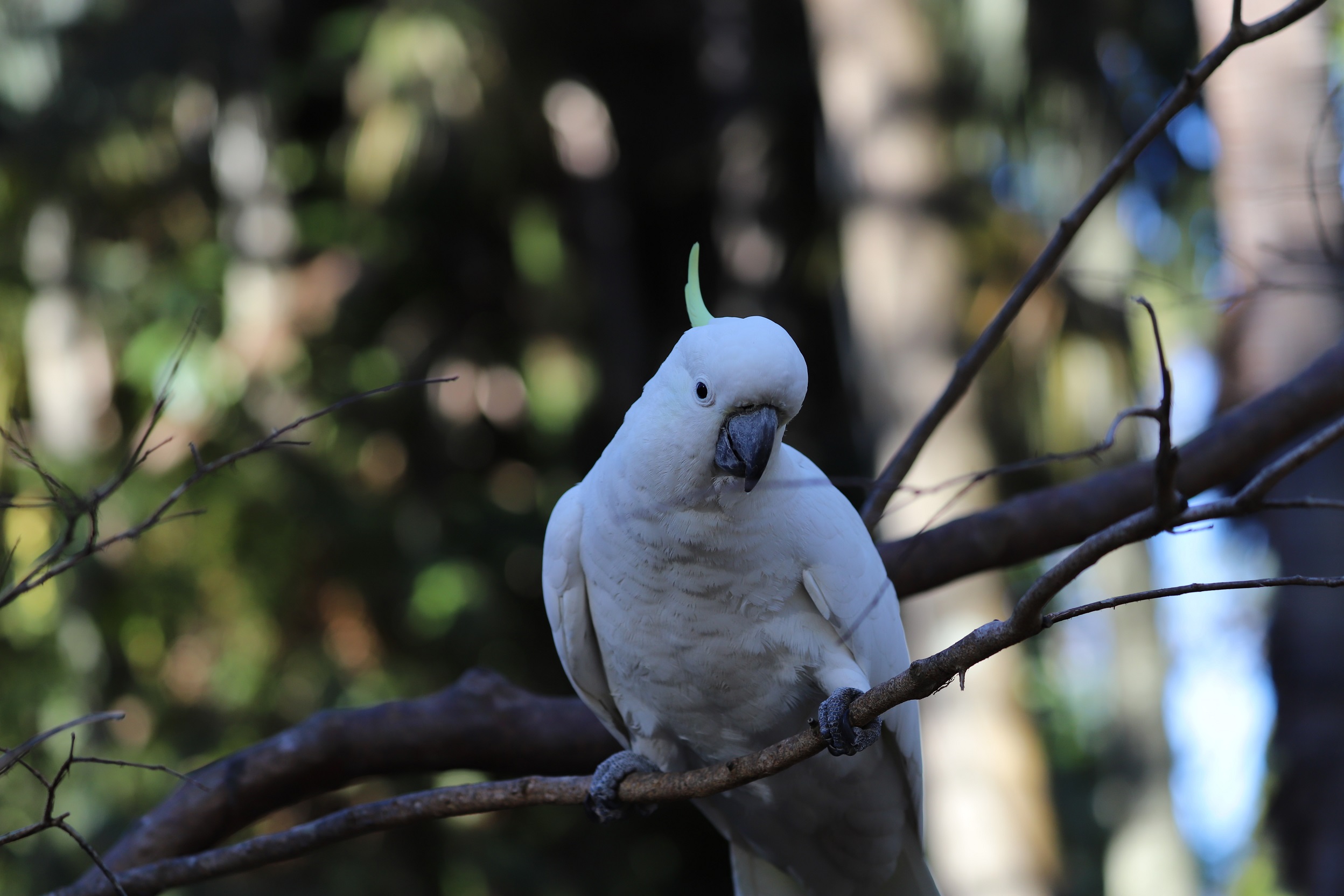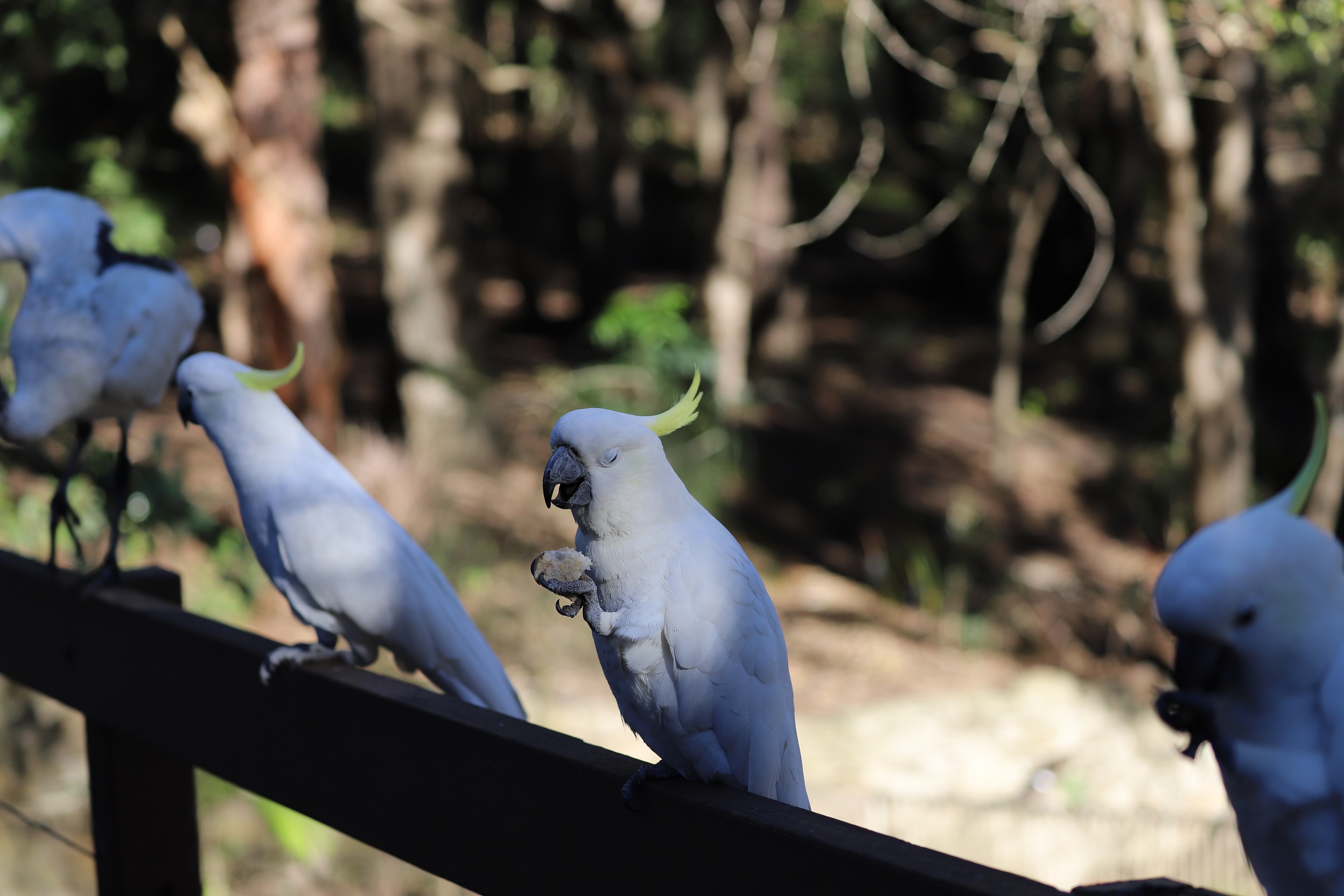

Sulphur-crested Cockatoos are large white native parrots with a yellow crest. Males and females look very similar, although females have red eyes while males’ eyes are black.
Sulphur-crested Cockatoos live in timbered habitats and stay in the same area all year round. They are successfully adapting to urban environments as their natural habitat reduces.
Having cockatoos in our cities and suburbs is quite wonderful. However, the following cockatoo behaviours can be challenging:
- They have a harsh, screeching call which can be very loud, especially when the flock is large.
- They can be messy feeders. Cockatoos will happily scavenge for food in garbage bins which can cause a significant mess. Some birds have even learned to open bin lids to access garbage.
- Cockatoos are fond of chewing and pulling materials apart, such as the soft timbers around window frames, decking wood, outdoor furniture, trees, shrubs etc.
Please don’t feed or encourage cockatoos!
Feeding native animals can cause them serious harm. Bread is especially harmful but even meat, seeds, fruit and honey can do more harm than good. It is bad for their health and they are likely to turn up regularly in noisy and often destructive flocks if fed.
Sutherland Shire has a wide variety of natural food sources for cockies, so they won’t be missing out if you don’t feed them, otherwise, you can help provide food sources by planting flowering native trees and shrubs in your garden. For instance, plants such as hakeas, grevilleas, acacias, and melaleucas provide habitat and nutrition for birds.
Rubbish bins, food scraps, waste processing centres, open grassy ovals, people intentionally feeding birds, gardens planted with seed and fruit-bearing plants all provide ample food for these birds. Some of these sources are not particularly healthy for the birds so please:
- Don’t overfill your garbage bins and make sure the lid is closed. Cockies thrive on access to food scraps.
- If using a public park or open space, always put your rubbish in the bin or take it home and dispose of it appropriately.
If cockies are damaging your house, garden, or other property, the following strategies may be helpful:
- Give them a quick squirt with a water pistol, spray bottle, or garden hose.
- Hang shiny, moving objects around the problem area (old CDs, strips of foil or used foil pie-dishes are perfect for this!).
- Try painting timber areas white as a deterrent.
- Use a scarecrow or hang a hawk/owl-shaped kite or decoy.
- String fishing wire across the area to deter them from landing
- Use wildlife-friendly netting on a frame over the affected area.
Yes, Cockatoos are a protected species in NSW under Biodiversity Conservation Act 2016 and it is against the law to harm them or collect their eggs.
Share this information or the Council’s Sulphur-crested Cockatoo Fact Sheet with your neighbours.
Also, the Australian Museum, Royal Botanic Gardens, Sydney University, and Domain Trust are currently conducting a long-term project to understand Sydney’s Sulphur-crested Cockatoo and Australian White Ibis populations. If you see an ibis or cockatoo with a numbered plastic tag on its wing or metal / coloured plastic bands around its legs, report it to the Big City Birds project. By reporting the bird, you will be providing valuable data about ibis populations and behaviour.
You can also download the Big City Birds (available for both Androids and iPhones).